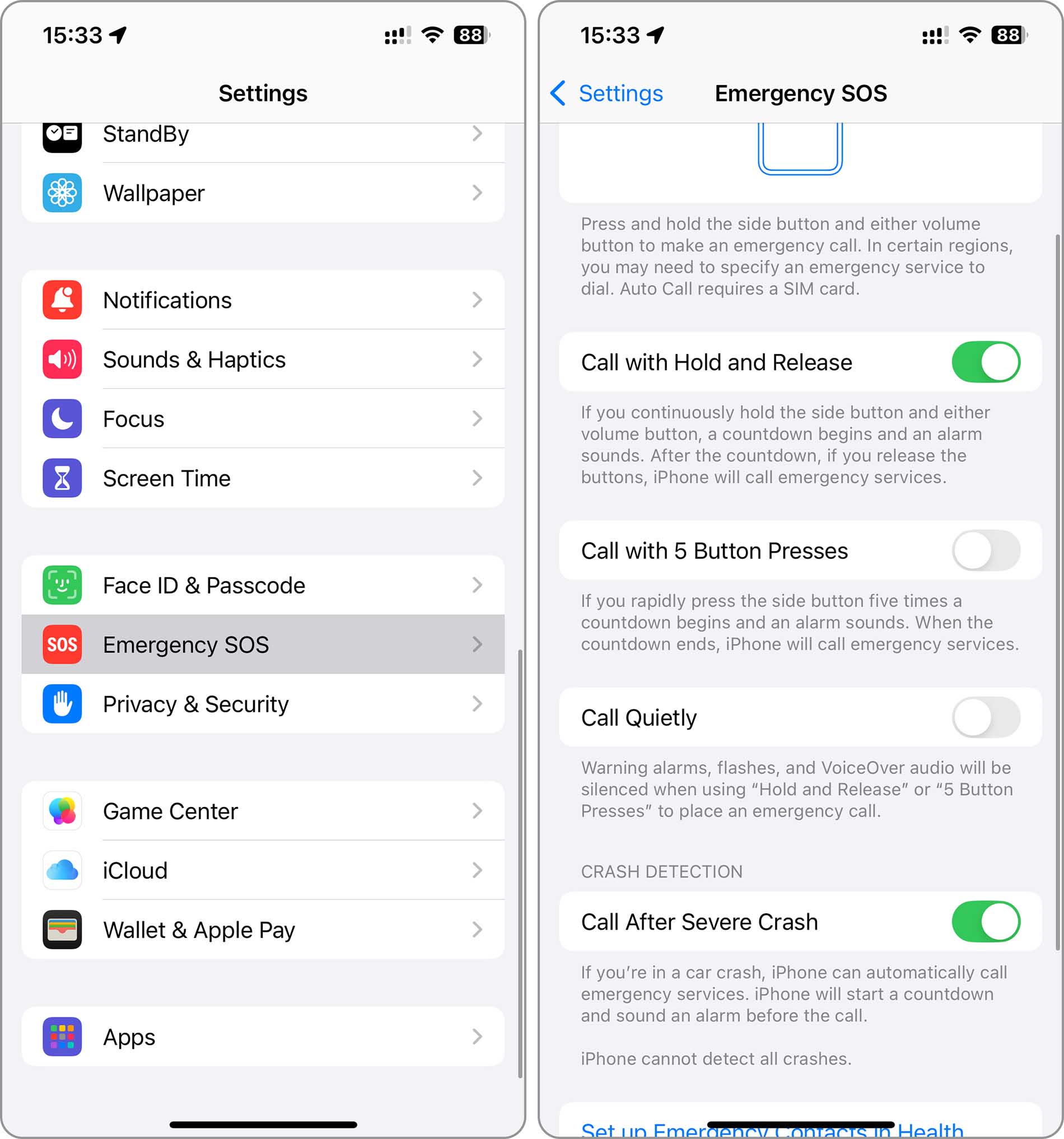
Life is the most valuable thing anyone has, and when an iPhone helps save it, the story sounds like something out of a sci-fi script, right? A smartphone pulling off a mountain rescue? Come on. But it happened in Colorado.
A report from The Aspen Times tells the story of a 53-year-old climber who ended up injured and stuck on Snowmass Mountain (no signal, no help in sight, just him, the backcountry, and his iPhone). Less than a day later, rescuers reached him thanks to Apple’s Emergency SOS via Satellite. Not exactly what Steve Jobs imagined when he pitched the first iPhone, but here we are. This isn’t the first time someone made it out of a dangerous situation thanks to this feature, and it sure won’t be the last.
So, here we’ll break down what happened in Colorado, examine a few other real-life rescues, and explain how Apple’s Emergency SOS via satellite actually works. Because when your kid vanishes on a trail or a simple road trip turns into a survival test, your iPhone could be the one lifeline you didn’t know you had.
Table of Contents
The Colorado Climber Who Used an iPhone Instead of a Flare
Snowmass Mountain in Colorado sits high in the Rockies, with steep descents and enough snow to make a seasoned climber second-guess every step. A 53-year-old man had just summited and began his descent by glissading, basically sliding down the snow like it’s a personal luge track. Somewhere during that descent, he injured his wrist badly enough that continuing on foot became impossible.

He had no cell signal, no radio, and no way to call for help the usual way. What he did have was an iPhone with Apple’s Emergency SOS via Satellite. Instead of sitting there hoping for a miracle, he used it to send a message to a family member, who then contacted emergency services in Pitkin County.
By 8:25 the next morning, Mountain Rescue Aspen mobilized a team of 17 responders. They hiked 8.3 miles into remote wilderness, with over 3 miles between them and the nearest road. After hours of effort, they located the injured climber and brought him out by 5:30 that evening.
Rescue officials later said that the man’s decision to use the satellite SOS tool likely saved his life. They also pointed out that a lot of people head into the backcountry without knowing how to use this feature, which might explain why some rescues take much longer, or don’t happen at all. When you’re stranded in the mountains, it turns out the most useful thing in your pocket might not be a multi-tool or emergency whistle, but a phone that knows how to text the sky.
Other Rescue Incidents When the iPhone Did More Than Post a Hike Pic
Colorado isn’t the only place where Apple’s satellite SOS feature stepped in as the unexpected hero. Since its release, several people in real trouble managed to use their phones for something more important than streaming music or checking Instagram. Here are a few cases where the iPhone played the role of search-and-rescue assistant better than anyone probably expected:
- In Florida in 2025, a man wrecked his truck and wound up trapped inside with serious injuries. He couldn’t reach his phone to call 911 the normal way, but his iPhone took over. Apple’s Emergency SOS crash detection kicked in, automatically dialing 911 the moment the sensors registered a major impact. The call connected itself, and dispatchers immediately saw that the vehicle had rolled and someone was stuck inside. He managed to speak up, describe his condition, and the system also sent precise GPS coordinates to responders. Rescue crews arrived fast, and officials later credited the iPhone with saving his life. (Florida, 2025)
- A family of five found themselves trapped in their van while wildfires closed in around them. No signal, no way out, and no time to waste. One of them had an iPhone 14 and used the satellite SOS tool to reach emergency responders. The phone walked them through a quick series of prompts, shared their exact location, and somehow had the fire department there in less than half an hour. If anyone still thinks this feature is just marketing fluff, this rescue would disagree. (Maui Wildfires, 2023)
My brother’s girlfriend’s cousin and his family were caught in their vehicle in Maui while the wildfires suddenly erupted around them.
No cell service, so Apple Emergency SOS was the only way they could get in contact with first responders. Literally saved their lives. pic.twitter.com/PpxNwTGOAf
— Michael J. Miraflor (@michaelmiraflor) August 10, 2023
- At 7:22 PM, a sudden flash flood tore through a secluded canyon east of Moab, carrying a 38-year-old woman and her dog downstream. She gripped her iPhone and triggered Emergency SOS via Satellite. The screen never showed a confirmation, but the distress signal went out. Rescue crews arrived by 9:20 PM (under two hours later), and found them alive about 1.5 miles from the trailhead. (Utah, 2023)
- At roughly 2:00 AM, a man riding a snowmobile outside Kotzebue broke down in subzero conditions. There was no signal, and he couldn’t exactly call AAA from the Arctic. He used his iPhone 14 to send an SOS via satellite, and the message reached Alaska State Troopers within half an hour. Search and rescue teams found him around 6:00 AM at Nimiuk Point, still alive, still in one piece, and probably rethinking his winter plans. Not a bad outcome, considering his best option was shouting into the wind. (Alaska, 2022)
Each of these situations came with terrible timing and no reliable service, but in every case, the satellite SOS option gave people a way to call for help when nothing else worked. It may not replace preparation or common sense, but it definitely gives modern “lost in the woods” stories a better shot at ending well.
How the Satellite SOS Feature Works and How to Set It Up Before You Need It
At this point, we assume the message came through that this feature saves lives. Mountain climbers, hikers, wildfire survivors, and the occasional unlucky driver in Florida all proved that it isn’t some gimmick Apple added just to sell more phones. Now it’s time to explain what this thing actually does and how you can set it up before ending up in your rescue headline.
Apple’s Emergency SOS via Satellite works by connecting your iPhone directly to a satellite when you’re outside cellular and Wi‑Fi coverage. It doesn’t give you full internet access or let you scroll memes from a mountaintop, but it does allow short messages to reach emergency services. The phone guides you through a quick set of questions – What happened? Are you hurt? Is anyone else with you? – then sends that info along with your GPS location to a relay center. That center contacts the nearest dispatchers, who then (ideally) send help your way.
In most situations, you need to activate it yourself. If you try to call emergency services and the call fails due to no signal, your iPhone will offer the “Emergency Text via Satellite” option. You can also hold the side button and one of the volume buttons until the SOS slider appears. Either method leads to the satellite connection process. The phone will then ask you to face the sky (literally) to establish a link. No, you don’t need to climb a tree or wave it around like a lunatic, just find an open view of the sky and follow the prompts on screen.
If you enable certain features in settings or pair your iPhone with an Apple Watch, Emergency SOS can fire on its own. If your phone or watch detects a major crash or hard fall, it will call 911 automatically (no need to press any buttons). If that call fails, the satellite SOS option kicks in.
To set it up:
- Go to Settings > Emergency SOS. Make sure “Call After Severe Crash” and “Call with Hold and Release” are enabled.

- Open the Health app, tap your profile, then go to Medical ID. Here you can add contacts and medical info that your phone will send automatically during an SOS.
- Apple lets you test how the feature works without calling real emergency services. Just tap Try Demo in the Emergency SOS section and follow the steps. It won’t contact anyone, but it will show you what to expect if you ever need it.
Once you’ve configured everything, the feature stays ready in the background. Hopefully, you’ll never need it. But if you do, you’ll be glad your phone knows how to find a satellite faster than you can find a trail marker.
Final Thought
At this point, most of us scroll past Apple news with a raised eyebrow – iOS 26 adds another layer of widgets, smart glasses might show up any year now, and someone always claims the next iPhone will fold itself into a wallet. But beyond the hype, the iPhone still carries features that actually matter, and Emergency SOS via Satellite proves it.
In this article, we mentioned just a handful of cases where the feature helped save lives. There are plenty more. A quick search online will show you stories that didn’t make front-page news, probably because satellite rescues don’t stir up as much chaos as politics or celebrity scandals.
Take five minutes, open your iPhone’s Settings, and confirm the feature works on your phone. Test the demo, set up your emergency contacts. Do all of this before you end up stuck in a canyon, inside a flipped truck, or somewhere with too many trees. You don’t need a keynote event to tell you that staying alive still counts as a useful feature.






